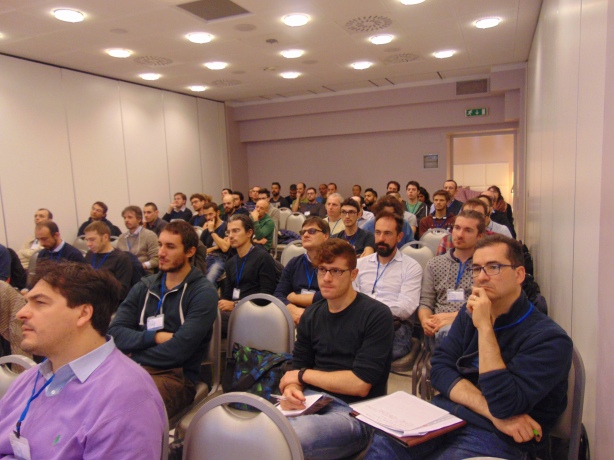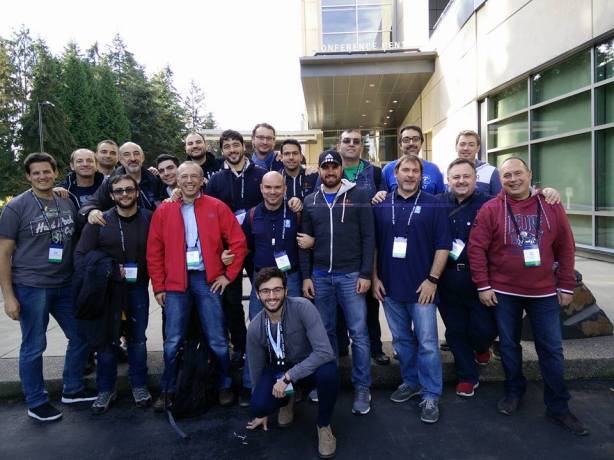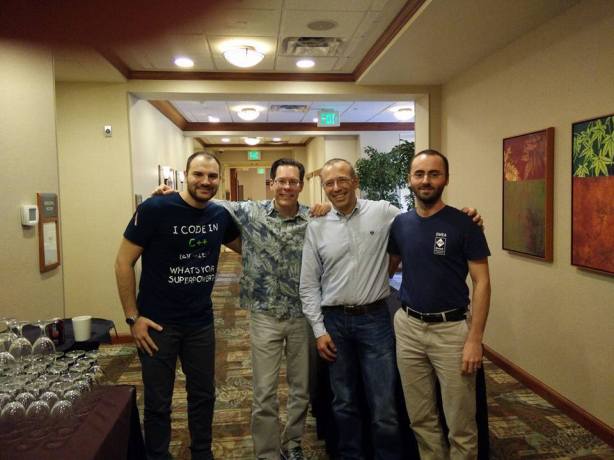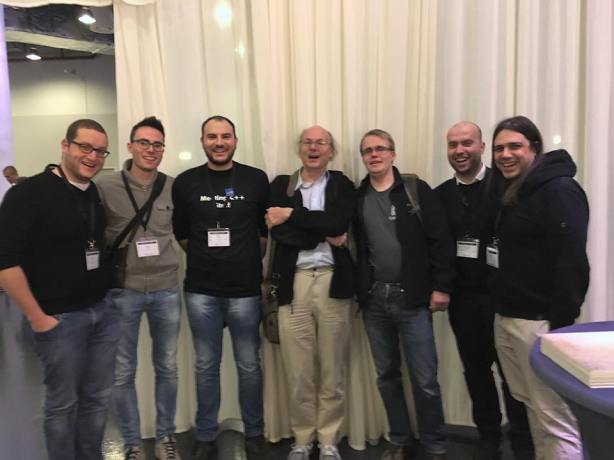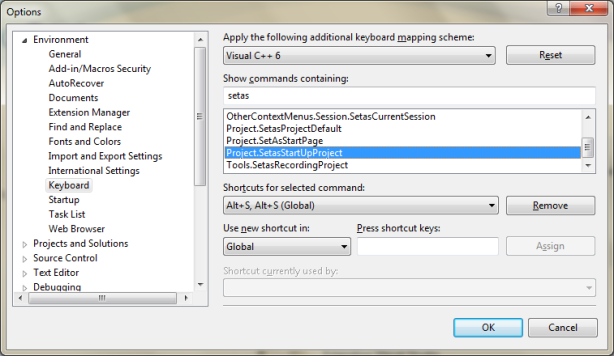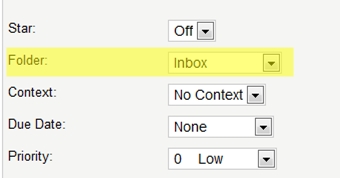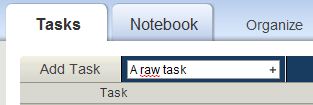 It’s happened I got a degree on December 20th and I had not a mind to start looking for a job until the second week of January. That was because I wanted to wait for the end of the Christmas season. I thought “who knows how many emails this company will receive” and I wanted to wait for the time needed to read them.
It’s happened I got a degree on December 20th and I had not a mind to start looking for a job until the second week of January. That was because I wanted to wait for the end of the Christmas season. I thought “who knows how many emails this company will receive” and I wanted to wait for the time needed to read them.
During this time, I remembered what I heard from some people during a couple of seminars I attended: “be aware of your targets and dreams“. Actually, starting from November, I tried to write down these things, making them more concrete. It doesn’t seem to be important, but it’s really fundamental. The starting point of your career is yourself. Understanding who you are, what you want, what your targets are, etc, you must start from here.
Maybe you know all these things but you’ve never thought about them concretely. How many people are able to answer the simple question “what is your dream?” ? I don’t want to hear “to become a footballer“, in that case I expect something like “improving my shooting skill, running faster and playing in a soccer team“. I liked the latter answer because it told me about real and concrete targets. Things you can do now. This job of self-awareness is not simple. It is dynamic and evolutive. It can happen you need some middle steps to be conscious of your final targets, like a ladder is composed by some rungs. Find your rungs and you’ll find the end of the ladder.
You can call these rungs in several ways: values, targets, dreams, etc. A rung moves you and it’s important to make it evident in a CV (if it is proper).
This article is not focusing on self-awareness. If you are interested, I suggest you to read other papers or simply to try to think about yourself in a pragmatic manner. It will be a good exercise. Answer questions like “If I had a magic wand, what would I do?“, “What can I do now to feel closer to my dreams?“, “What makes me happy?“. Then, this is the begin of the story. This was the first thing I did to find a job and to write a good CV.
The second step was to write a base CV, that was such a general and nonspecific for a certain company. Write two models: a European CV (max 2 pages, follow the standard but customize it) and an American one (one page, very schematic). This article doesn’t cover how to write a good CV, then google for details. Remember to be short and clear, you should draw the attention to you when the recruiter reads your resume. Put a “firefly” in your CV, something the reader will certainly notice. These resumes are useful if a fast opportunity meets you (whenever you’re forced to send something quickly).
Then, you have a couple of resumes. And now? Now the game starts. You have to employ a “marketing strategy“ to find a job and to “sell” yourself in the job market. This plan is composed of five magical words you must keep in mind:
- Market;
- Product;
- Price;
- Place;
- Promotion.
These terms depict your professional world in a marketing context. You must give a meaning to each one.
Let’s start from Market. The market is the area where you want to work in, the position you long for. Identify your market and narrow down your job area. If you have more areas of interest (for example, Videogames Industry, Scientific Computing, Software Engineering), then make a sort of “ranking“, following your feelings. This is important to be flexible.
You are the Product. You have to sell your values and your strong points. Why are you different from the others? Enrich your product and be aware of its limits. Figure out what products the companies of your market are looking for.
How does it cost your product? What is its Price? Your price is a mixture of several things: salary, benefits, work site (imagine you have to relocate to another city), work environment, company reputation, experience you are going to acquire, etc. When you negotiate a job, remember your price.
You have a priced product in a market. What else? Try to “physically” sell it in a Place. Identify job meeting areas, take part to exhibitions and subscribe to the most visited social networks (primarily LinkedIn – read the last section of this article for some useful tips about LinkedIn – Monster is another good website). Thanks to my complete and clear profile, I’ve received lots of job offers via LinkedIn and Monster. Get ready to meet your future boss wherever you go, maybe during the happy hour with your friends or while you are standing in a line to pay the electricity bill.
Finally, you must promote your product: Promotion. Now the game really begins. Identify target companies in your market and write a focused CV (and a cover letter) for each of them. Try to enrich your resume with specific strong points, dear to the company you are applying for. Remember what I said about the place. Do some networking, speak with people, create original business cards (for example, I drew a business card using a triangular mesh as a background, just for saying “this guy likes computer graphics, doesn’t he?“). The promotion is, maybe, the most difficult phase in your plan. Don’t give up if you don’t get any replications back.
If your market is really “closed”, you should consider the possibility to turn a little from it. If you really can’t wait for a job, you must be disposed to work in other markets. It can happen you have to reply to a job offer within some days (say 7 days) and this offer is good, however it’s not the job of your dreams. Suppose you haven’t received other “assured” job offers (assured = if you take that job, you’ll certainly work for that company). What to do? That’s a good question! If you are sure that you’ll receive other better offers (remember your price), then you can turn the offer down. Otherwise, listen to yourself and make your decision. A handful of factors should be considered:
- Time you’ve been out of a job for – or time from your graduation day, if you are a new graduate (it’s important that you don’t have “big holes” in your CV: “what did you do last six months?” “I ascended Mount Everest” This is better than a hole and demonstrates your personality, but be careful!).
- Money. Do you need money soon? If the answer is yes, you should work soon.
- If you take the job, you’ll acquire experience, improving your CV. You can work for that company for some time (say, at least 3-6 months) and then (or meanwhile) look for a more interesting job (having more experience, so more choices to be hired).
- How old are you? If you are a young (23-25) new graduate then you can “be wrong” a little (you should have time to adjust your aim and to fix a job-target), but don’t rest on your laurels! The first job can be your “stepping stone”. Bear in mind that a lot of companies do not open “junior” positions for over-30 people. This means that if you don’t have any experience and you are over 30, then the working world has bad news for you. But don’t be scared, I speak at second hand and I could be mistaken!
In sooth, there are a lot of other things you should mind, depending on your situation, your friends (maybe your best friend’s father works for an important company you are interested in), your family, etc.
Prior to reaching the conclusion of this section, I’d like to wrap up these things and write down a hypothetical step-by-step plan:
- Self-awareness: Who I am, What I want, etc. Be aware of yourself and your dreams.
- Write two generic resumes (using both European and American format).
- Think about your marketing plan, being exhaustive.
- Prepare a “back-up” marketing plan to use if you fail using the previous.
- Identify your target companies, obtain information about them and write focused resumes/cover letters.
- Apply for your first-choice companies.
- Take some time to wait for replies.
- If you don’t get replies back within 3-4 weeks, employ your back-up plan and apply for other companies.
- If you don’t get replies back within 2-3 weeks, keep on employing steps 4 and 8.
- Good luck!
By and large, steps 1-4 should not need more than 5-8 days. Complete quickly the steps 5 and 6 (at most 3-4 hours per company).
It can happen that you need some extra skills to apply for some companies, such as a language certification, evidences of your experience (for example, a technical demo of a project you worked on), etc. In this case you might take time (as well as money) for acquiring these skills: it is an investment in yourself.
Remember that your personal projects are a good way to show your experience. Mention to them in your resume but don’t be too detailed; you can employ a blog or a professional website for this purpose. Be professional. It’s better not to show a demo than to show a bad demo.
When you apply for some companies, I heartily recommend you to write down a table/scheme with (at least) these information:
- name of the company;
- application date;
- application “current state” (for example, “no positions available” or “interview on Feb 11th”);
- application “story” (if you really want – I don’t have one);
- other relevant information if you need any (website, people you met, etc).
You can use some desktop applications (like Sticky Notes) to have these information on hand, quickly.
The day of the interview
The first time I had a job interview I was oddly calm. I had an appointment at 10am and I knew the interview site was not too far from home, then I didn’t need to get up earlier than 8.30am to be on the safe side.
Mind where the place of the interview is, but don’t be maniac making a lot of inspections of it. Going there once suffices. It is important to arrive some minutes earlier, but not a lot.
Be aware of logistics problems: parking, delays of public transportation, traffic, etc. But I repeat: don’t be maniac! Sleeping in a tent down the office where you have the interview is not a perfect idea!
Keep in mind all the information you really need to know: the name of the person you’re about to meet, his/her telephone number (if provided), the exact address, etc.
Take care of your apparel and clothing. Generally, the best compromise is a “business casual” clothing, that is: jeans, shirt (a sober one), jacket, tie. But it depends on the company. If you find out the company has a “dress code” then you can follow it (not shamelessly, the recruiter does not want to look at himself/herself in the mirror!). Remember to dress with your style, your personality, because a recruiter will notice if you aren’t at ease. If you are meeting an “eccentric” company then you can think about a freakish apparel, trying to give an impression of your personality.
Another thing you should not forget is to know by heart your CV. If you wrote “Deep knowledge of ABC”, rest assure you really have a deep knowledge of ABC and remember what ABC is (if it is an acronym you wrote ten years ago, review it). Be sure you have no flaws in your CV (blatant typo, wrong information, etc) and don’t lie so much – you can bluff but moderately!
Finally you are face to face with your interviewer. Introduce yourself with an active voice and a strong handshake (don’t worry if your hand is wet because it is considered a quality of a man who works a lot! – be sure it is not too wet, drying it with your pants if you need to).
Bear in mind these are the questions he/she will answer to decide:
- Can you do this job? Are you qualified? (skills, experience, etc)
- Want you to do this job? (interest, proactiveness, etc)
- Are you right for the job? (style, empathy, values, communication skills, etc)
You must convince the recruiter that:
- You’ll be able to do the job;
- You want to do the job (in that company);
- You’ll familiarize with the others;
- You don’t have personal constraints.
Initial questions are cognitive, such as “Tell me about yourself?“, “Why did you study …?“, “What are your merits?“, “What are your limits?“, etc. Try to answer shortly, making practical examples of your skills (for example, “I am very proficient at programming, in fact I wrote an operating system in two weeks. You can download it at …“). If you don’t have any examples, create one (at home – be prepared). Be credible. Refer to the university (who can verify and how?).
Give these tips a cursory glance:
- Keep as calm as you can;
- Pay attention to your gesticulation (more than 90% of the communication comes from the body);
- Listen to the questions carefully;
- Be clear and concise;
- Don’t be too polite nor too friendly;
- Keep a cooperative attitude;
- Ask questions, be curious and proactive about the job, try to “buy” the job “selling yourself”;
- Know what you want.
- The best suggestion I feel to make is: be yourself.
It’s common to have positive signs if the recruiter:
- protracts the interview (maybe he/she likes you);
- asks “hard” questions;
- makes another appointment with you;
- describes a work situation and asks you how to act;
- shows you the offices;
- asks when you can start working;
- introduces you to other members of the staff.
If you receive a job offer, don’t be hasty. Take your time. If the company is really interested in your profile, it should give you some time to decide. Claim a detailed job description, if it is possible. At home you can calmly think about the job, considering all the details. Bear in mind your marketing plan.
Generally, a company gives you 7-10 days to reach a decision. Do you know how many things can happen in that time? Another company you don’t expect gets in touch with you, other job positions are opened at the company you dream to work for, you win the lotto (or a meteorite falls on the Earth, more likely!), etc. If the company doesn’t give you some days, be careful and ask why. A reason can be that the company has done a fast recruitment process and if you have joined it then your decision has already been made.
LinkedIn tips
You know the Six degrees of separation theory, don’t you? It refers to the idea that everyone is on average approximately six steps away from any other person on Earth, so that a chain of, “a friend of a friend” statements can be made, on average, to connect any two people in six steps or fewer.
This theory is very important if you want to find a job. Why? The answer is “weak links“, aka “friends of friends“. Suppose you want to work for the company “X” and a friend of a friend of yours works there. You can try to get introduced to him through your friend, easing the recruitment process. Weak links also refer to connections you met once or twice in your life, for example on vacation or during a meeting. Keep in mind them if you are looking for a job.
Another thing you should remember: recruiters use social networks. I’ve heard of people screened out for the information posted on their profiles, smart recent graduates made a rod for their own back because they wrote a nasty comment about a company they applied for, etc. I assure: several companies I applied for viewed my profile.
The Web is a parallel world, if you are famous on the Web, likely you’re famous on the Earth! Take care of your digital identity. You are a brand and you should apply a marketing policy to yourself (as I wrote some lines above). How strong is your brand? Estimate it on www.onlineidcalculator.com and try to answer this question. Your online reputation (what the others say about you, on the Web) it’s important and you can make it grow, just writing on a blog or posting amazing videos on Youtube. Add these references on LinkedIn (there are some sections for that) and inform all your connections about your hobbies and professional articles.
The basic suggestion I make you is: write in English. You have more or less 2000 characters to write a sketch about yourself. Be clear, short but complete. Strive to cover your education, you dreams, your hobbies, etc. Link them in an experienced plot.
Employ all the sections you consider useful to enrich your profile (wordpress box, skills section, etc). Update your profile and make this evident (for example including a brief section “What’s going on” or “What I am doing now” to talk about your current occupation, projects, etc).
Here are other tips you can employ to improve your brand on LinkedIn (thanks to Irene Morrione for taking an awesome seminar about this topic):
1. Define a professional target (making your values unmistakable);
2. Create a strong-points-based profile, writing your uniqueness;
3. Let know you’re searching a job and what you’re looking for. Make this evident to your weak links;
4. Request recommendations (starting from your classmates);
5. Determine people having your background/skills: where they go and where they come from. Where are they demanded? Investigate!
6. Check the “new hires” section to figure out if a certain company is hiring and what profiles it is interested in;
7. Get through to the manager (or HR, etc) via weak links. How many degrees are you far from the top manager? Are you daring and want you to get in touch with him? Well, intrigue him. Highlight your strong points and make evident why you’re different by the others. Mind to interact depending on the content;
8. Identify the secret requirements of an announcement. Search the Web to acquire more information about the company, hear for words of mouth, etc. If you can, you should act like a “social engineer” (but don’t steal any information!). You’ll be able to make focused applications;
9. Look for startups;
10. Dare. You’ve got nothing to lose!
This brief article roughly discusses some tips to find a job and to prepare yourself for being interviewed. All the information I wrote become from my little experience, a handful of seminars I attended and some papers I read. If you search the Web, you’ll find a lot of detailed guides about these topics. Find and try to ask the typical questions of a job interview and remember to write a killer CV! The first impression is the most important. Keep in mind which company you are going to apply for, its core business, etc.
“Luck doesn’t exist. There is only the moment when talent meets opportunity” – Seneca
